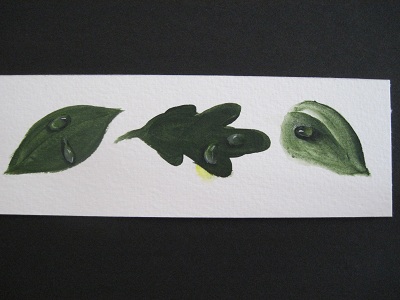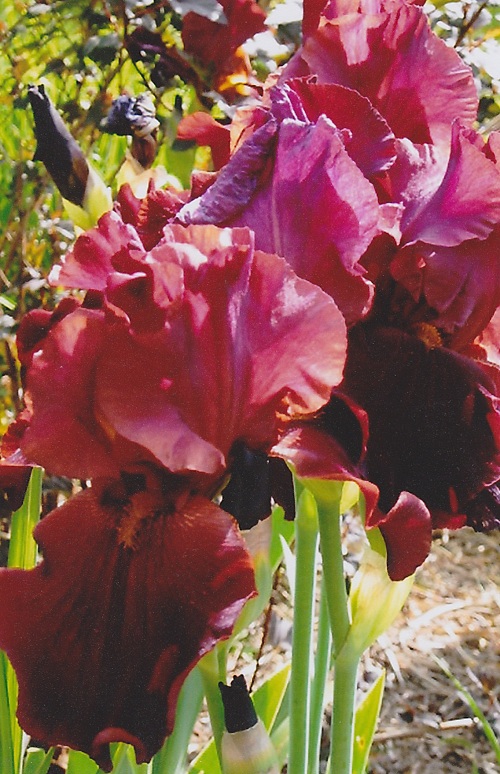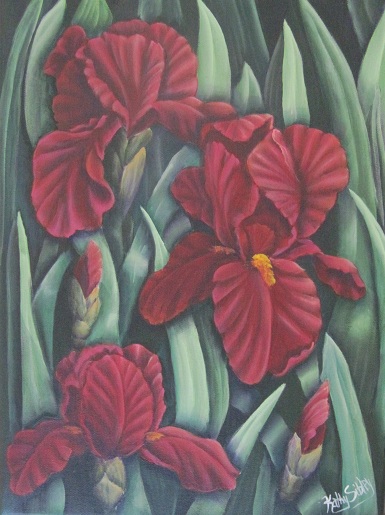Solving A Painting That Is Not Working, Part 2
I suggested several steps yesterday to take when you can't figure out why a painting isn't working. For this painting, even turning it upside down wasn't getting me to what the problem was. So luckily for me, my family was here. Family – especially teens and young 20's will tell you the truth – even when you didn't ask them. : )
My family was curious how I could fix the imbalance after they noticed the problem. Since they were interested I got them involved in step 1 – brainstorm how to fix it. With my chalk – step 2 – I sketched out on the painted canvas our ideas. [ Chalk is great – it doesn't disturb the painting and wipes right off. ] We tried adding more sunflowers, more details on the pumpkins, pumpkin leaves and vines from the stems, until someone blurted out turning it into a jack- 0-lantern. Whoa!….. that was not at all what I had been thinking.
But you know what? It worked. It balanced the painting and added a light note to the painting to match the color palette I had chosen. Here's the chalked idea:
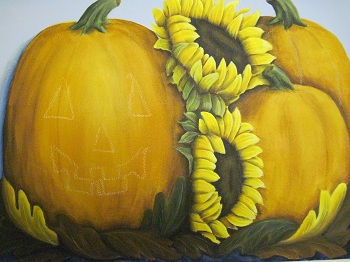
And here's the final painting after also adding a final tint on the pumpkins and photographing in natural light:
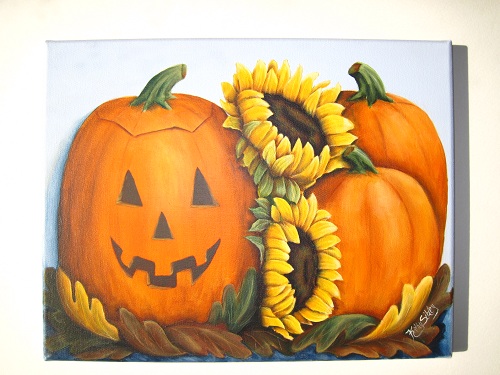
I had envisioned an Indian summer day for this painting, picking a light palette of colors rather than the usual darker colors used in pumpkin paintings. Adding a face to the pumpkin kept a lightness in the painting in addition to balancing out a composition error. In a roundabout way, that's where the painting ended up – a warm, Indian summer day in early October.
What do you think?
.jpg)
